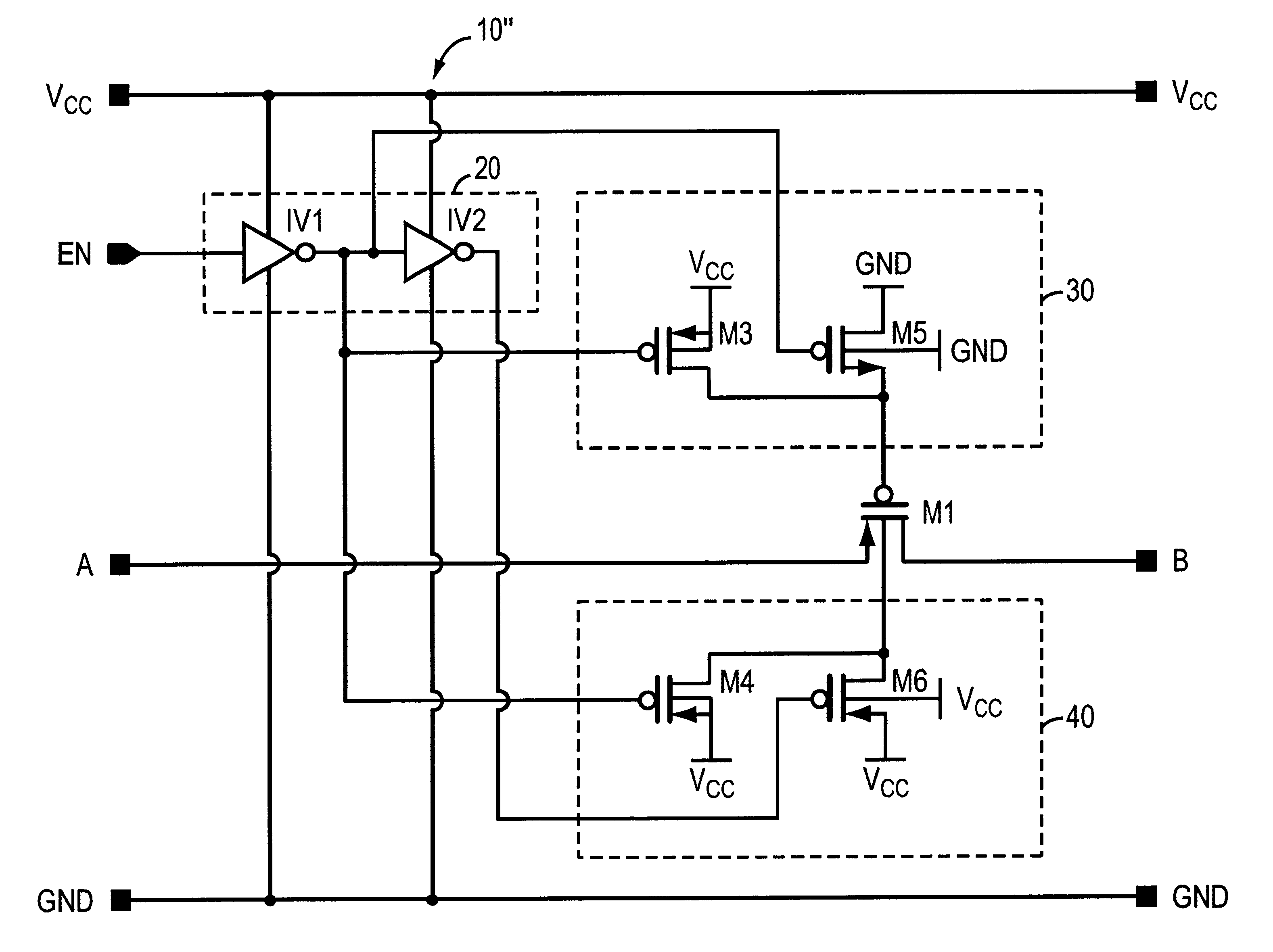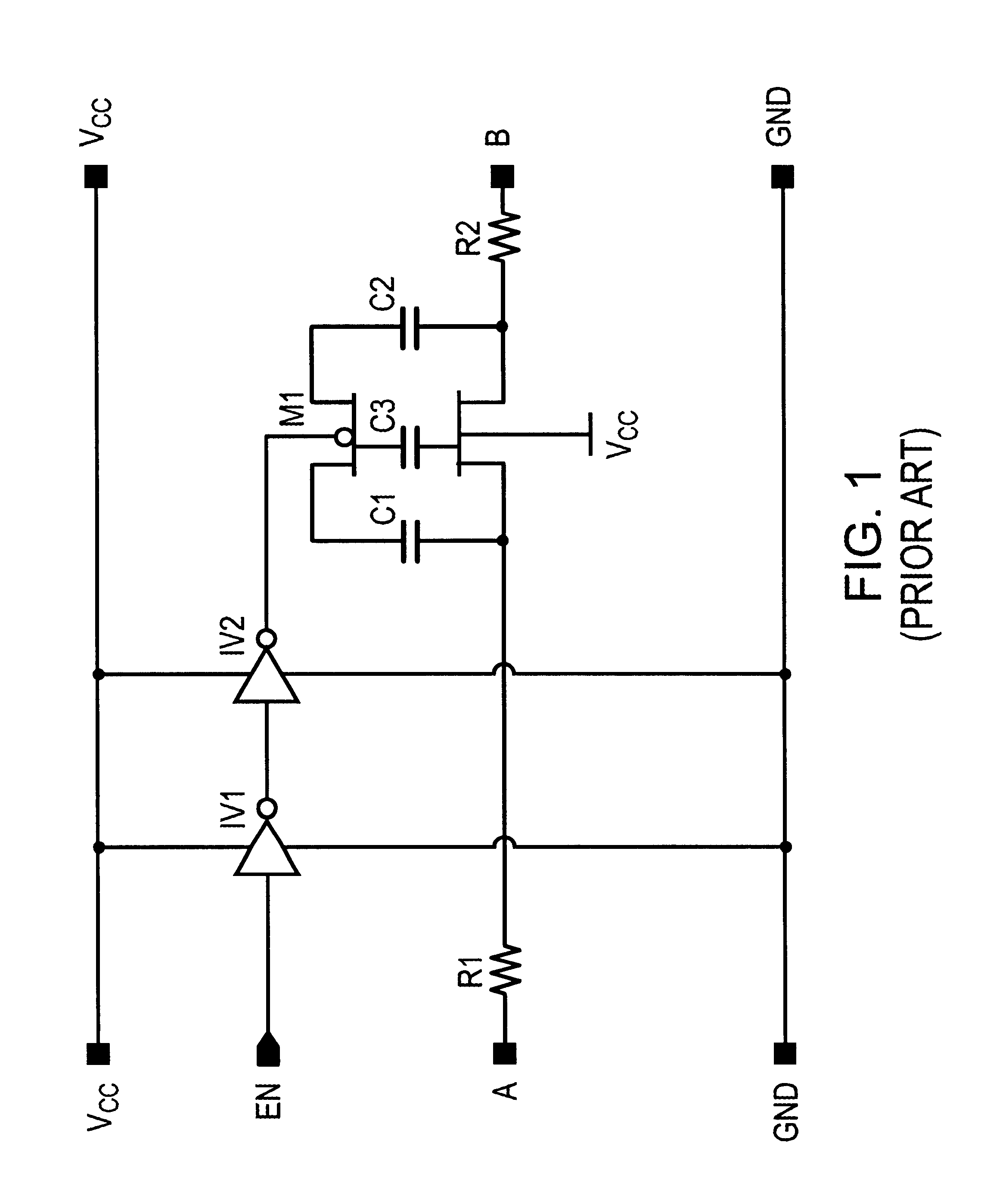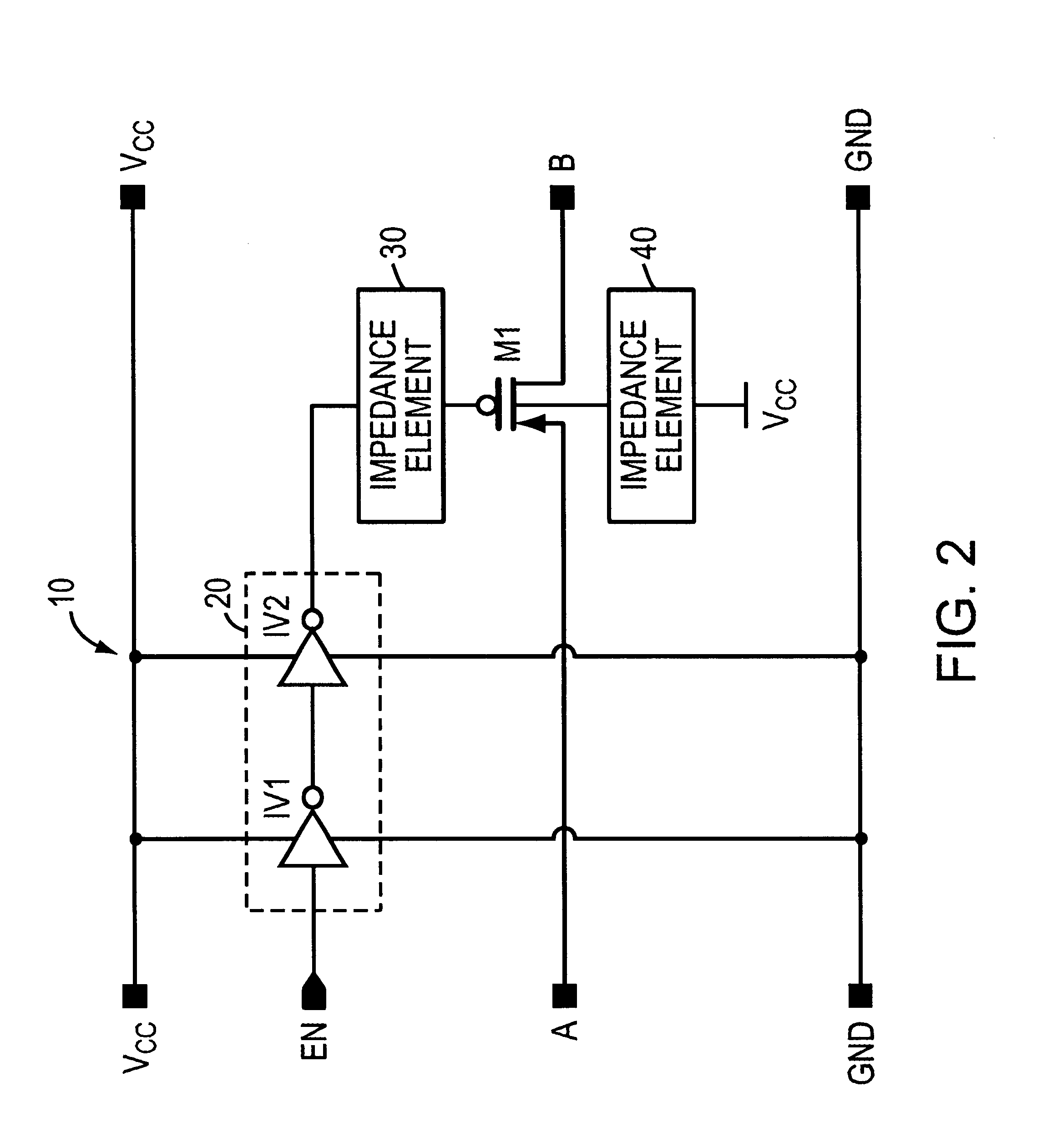High frequency MOSFET switch
a high-frequency mosfet switch and switch technology, applied in electronic switching, pulse automatic control, pulse technique, etc., can solve the problems of increasing the on-resistance of the transistor, significant difficulty in propagating signals, and inability to pass signals attenuated,
- Summary
- Abstract
- Description
- Claims
- Application Information
AI Technical Summary
Problems solved by technology
Method used
Image
Examples
Embodiment Construction
A high-frequency switch circuit 10 of the present invention is shown in FIG. 2. The circuit 10 includes an inverter stage 20 preferably formed of inverters IV1 and IV2 and PMOS pass gate transistor M1, much as in the prior-art switch shown in FIG. 1. Of course, the inverter stage 20 may be formed of a plurality of pairs of inverters, or some alternative form of enable signal propagation mechanism. The circuit 10 also includes a first impedance element 30 and a second impedance element 40, wherein element 30 is coupled between the output of inverter stage 20 and the gate of M1 and element 40 is coupled between the bulk of M1 and high-potential power rail Vcc. An enable signal coming from a control circuit (not shown) by output enable node EN is preferably coupled to the input of the inverter stage 20 to substantially define the control of the operation of transistor M1 by its gate. Inverters IV1 and IV2 are typically powered by high-potential rail Vcc and low-potential rail GND. It i...
PUM
 Login to View More
Login to View More Abstract
Description
Claims
Application Information
 Login to View More
Login to View More - R&D
- Intellectual Property
- Life Sciences
- Materials
- Tech Scout
- Unparalleled Data Quality
- Higher Quality Content
- 60% Fewer Hallucinations
Browse by: Latest US Patents, China's latest patents, Technical Efficacy Thesaurus, Application Domain, Technology Topic, Popular Technical Reports.
© 2025 PatSnap. All rights reserved.Legal|Privacy policy|Modern Slavery Act Transparency Statement|Sitemap|About US| Contact US: help@patsnap.com



